Visit Tuol Sleng Genocide Museum To Explore The Intriguing History Of Cambodia In 2026
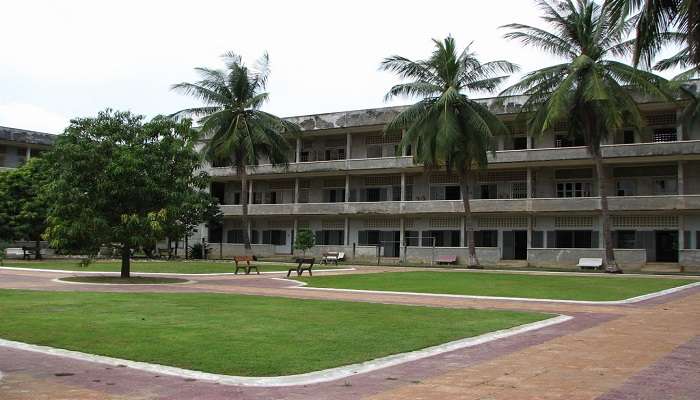
The Tuol Sleng Genocide Museum is a memorial site of the interrogation and detention centre of the Khmer Rouge regime. Locally known as Tuol Sleng, this museum is located right in the centre of Phnom Penh and chronicles the Cambodian genocide. It is a haunting testament to one of the darkest chapters in human history, formally known as Security Prison 21 or S-21. The museum has harrowing exhibits, like photographs, documents, and personal items of the prisoners. You’ll also find illustrations of atrocities committed. The Tuol Sleng Genocide Museum now serves as a memorial and educational centre and is a must-visit place for those seeking to understand Cambodia’s history.
Tuol Sleng Genocide Museum History And Significance

According to the Tuol Sleng Genocide Museum’s history, this site served as the primary interrogation and torture centre during the Khmer Rouge regime’s brutal reign of terror from 1975 to 1979. Tuol Sleng was originally a high school known as Toul Swe Prey, but under the Khmer Rouge regime, it transformed into a house of horrors. From 1976 to 1979, an estimated 20,000 people were imprisoned at Tuol Sleng, which was between one of 150 and 196 torture and execution centres established by the Khmer Rouge and the secret police known as the Santebal.
In 1980, the government opened it for the people to visit as a war memorial and museum. The high school, Toul Swe Prey, was initially built in 1962, and then the Khmer Rouge enclosed the premises with an electric barbed wire. The classrooms transformed into prison cells, interrogation rooms, and torture chambers. The cell blocks were small, 2.6 feet wide and 6.5 feet long. Only 12 prisoners survived out of the 20000 prisoners; each one of them was tortured until they confessed their crimes against Pol Pot’s regime. The dead prisoners are buried at the killing fields of Choeung Ek.
Must Read: Places To Visit In Cambodia
Experiences You Will Get At Tuol Sleng Genocide Museum
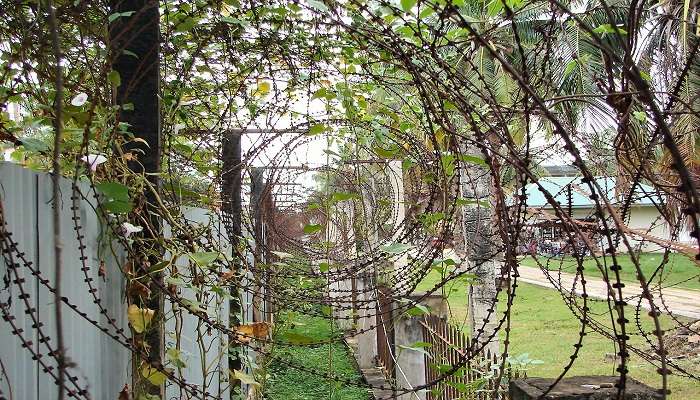
The museum has harrowing exhibits, like photographs, documents, and personal items of the prisoners. You will also find some of the illustrations of atrocities committed by Vann Nath, a survivor, depicting life and torture at Tuol Sleng—the instruments they used while torturing are also on display. A 20-foot memorial monument is surrounded by black marble plaques listing known victims’ names.
Historical Insight
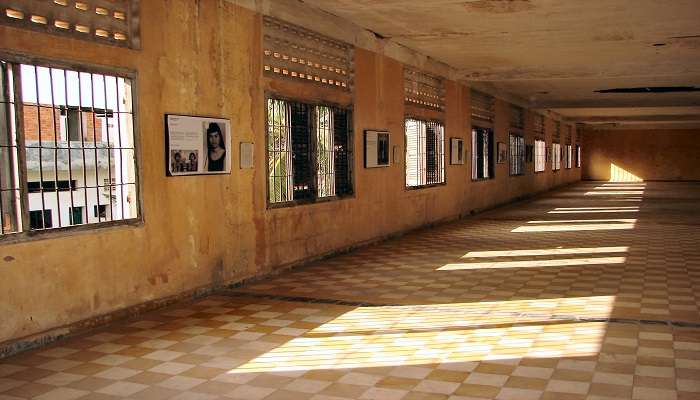
Get to know the Cambodian genocide and the Khmer Rouge regime’s brutality through the exhibits and stories. Understand better how Security Prison 21 (S-21) was established and how it functioned in the context of Khmer Rouge terror. The stories of the prisoners documented give real testimonies, an account of history in person.
Suggested Read: Siem Reap Travel Tips
Emotional Journey
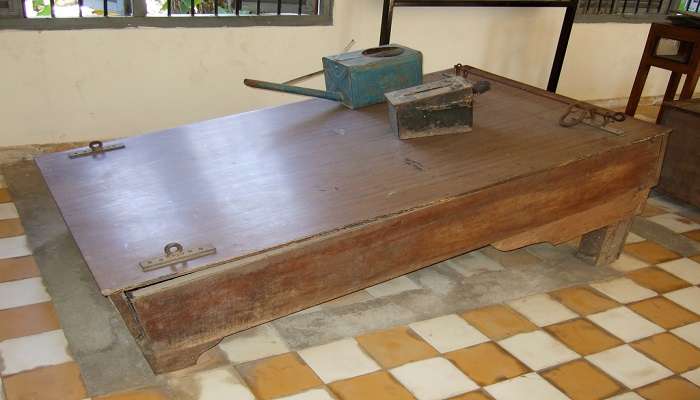
Go on an emotional journey as you walk through the former classrooms turned into torture rooms and cells and see the prisoners’ suffering up close. There are prisoners’ personal belongings, clothes, photos and letters; you will feel the loss and empathy. Think about the survivors’ experiences and put a face to the unimaginable suffering of thousands.
Interactive Exhibits
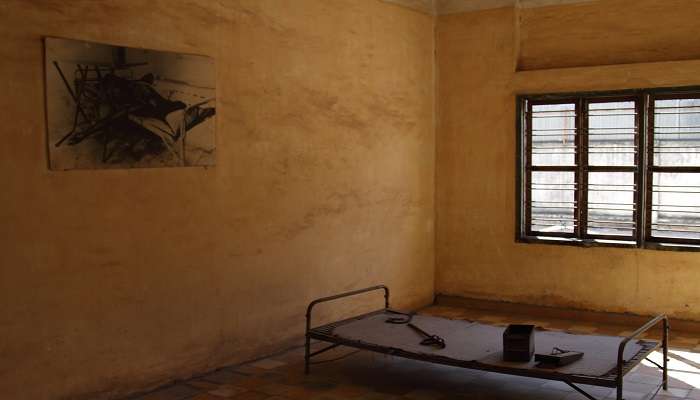
Sophisticated techniques of interrogation and torture, the living conditions of the prisoners, and the broader historical context all come alive through the displays and survivors’ accounts. Take part in interactive exhibits that describe in detail how the ideology of the Khmer Rouge changed Cambodian society. Understand the global response to the Cambodian genocide and the ongoing efforts toward justice and reconciliation.
Suggested Read: Cambodia Resorts
Visual Insight
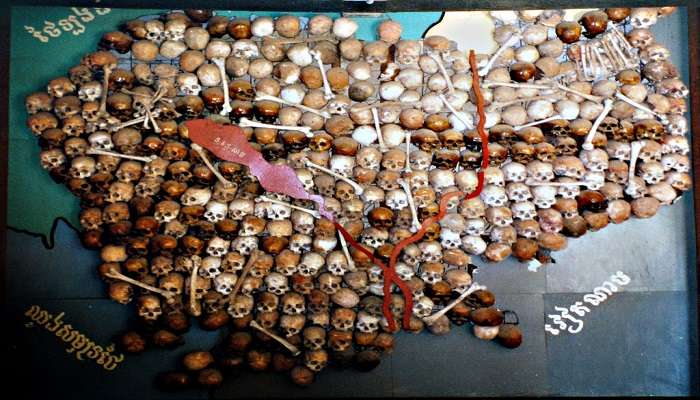
See the black-and-white photographs taken before, during, and after the prisoners were tortured, the inhuman reality of their sufferings. See the prisoners’ personal belongings, clothes, and documents, tangible glimpses that bring one closer to their stories. Admire Vann Nath’s artwork; he was himself a survivor who portrayed the regime’s brutality in paintings as a visual expression of the brutality.
Memoria
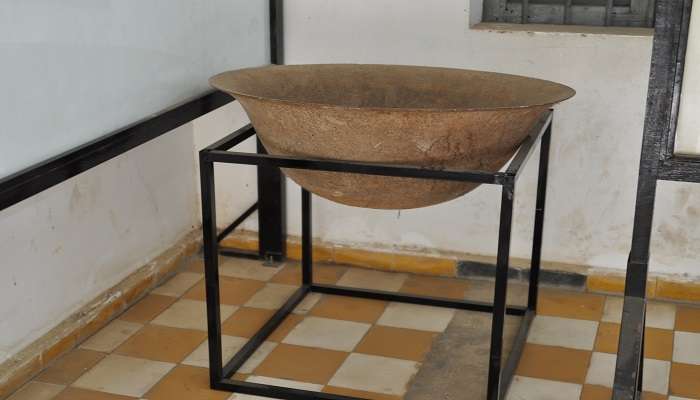
Think about the past and pay respect to the victims at the memorial with a 20-foot stupa and black marble plaques of all the known S-21 victims. Enjoy the peaceful courtyard and contemplate the contrast between the surroundings and the hell inside. Join in the remembrance activities and leave a message or tribute to the victims, part of the collective memory and the ongoing conversation about the genocide.
Suggested Read: Places To Visit In Siem Reap
Tuol Sleng Genocide Museum Nearby Attractions
Nearby the Tuol Sleng Genocide Museum, visitors can explore various attractions that offer a deeper understanding of Phnom Penh’s rich history and culture. There are many places to explore, from the Independence Monument to the Royal Palace and the bustling Central Market.
Royal Palace
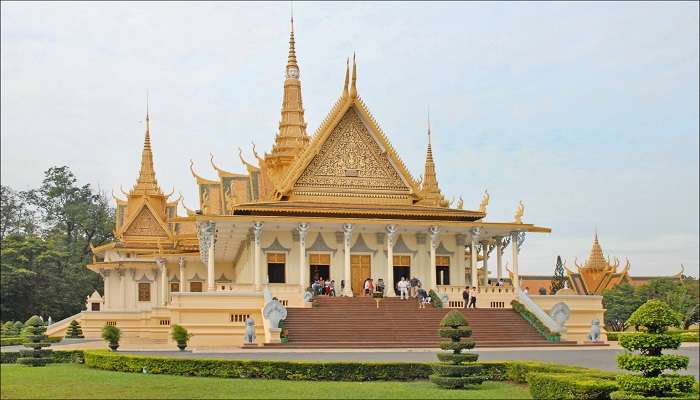
Royal Palace is a striking structure near the riverfront that captivates visitors with classic Khmer roofs and ornate gilding. This architectural landmark shows the nation’s regal history and craftsmanship. For generations, the palace has been the official residence of Cambodian kings and the royal family.
Address: HW7J+HG6, Samdach Sothearos Blvd (3), Phnom Penh, Cambodia
Distance: 2.23km from Tuol Sleng Genocide Museum
Suggested Read: Hotels In Cambodia
The Central Market
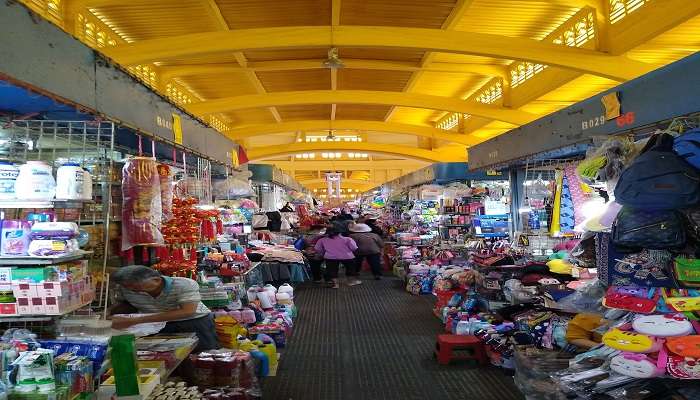
Constructed in 1937, this expansive market boasts unique artistic features and diverse goods, ranging from upscale items to technology, clothing, and food. Situated at the junction of Kampuchea Krom, Road 63, and Road 67, it exudes a vibrant and bustling atmosphere, offering ample shopping opportunities and a glimpse into local life—a perfect stop after visiting the museum.
Address: Central Market, 51 Street 51, Phnom Penh, Cambodia
Distance: 2.33km from Tuol Sleng Genocide Museum
Tuol Tom Poung Market
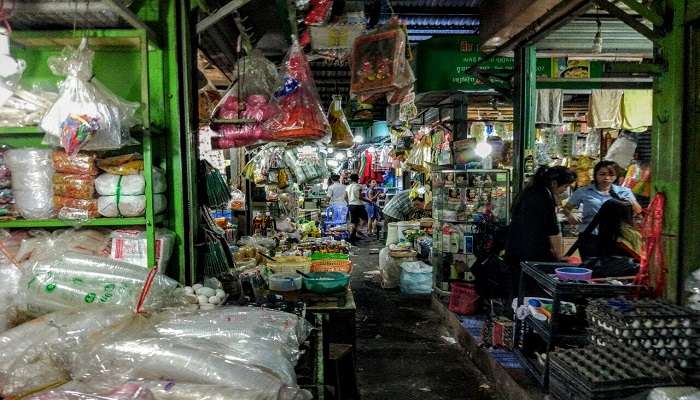
Also referred to as the Russian Market, this bustling hub offers various goods, including clothing, gifts, and street food. Visitors can negotiate prices with the vendors. Located on Streets 440 and 163, near the Sad Museum, it’s a vibrant destination for discovering new items and experiencing local culture. Popular among locals and tourists alike, it captures the essence of everyday life in the area.
Address: St 113, Phnom Penh 12304, Cambodia
Distance: 1.3km from Tuol Sleng Genocide Museum
Suggested Read: Trekking In Siem Reap
National Museum Of Cambodia
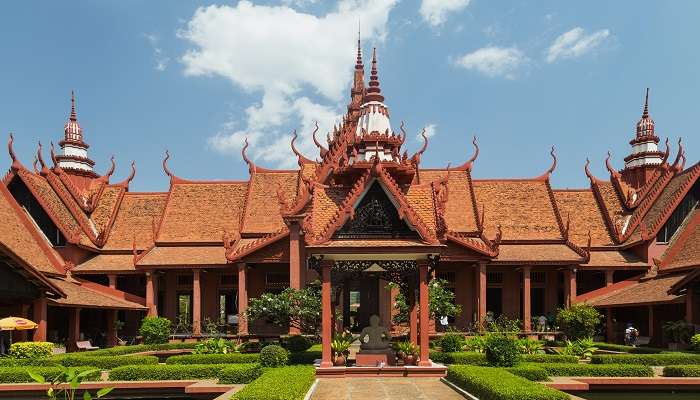
Located near the King’s House on Road 13, this place houses the largest collection of Khmer art globally, featuring artefacts from ancient times and the grand Khmer era. It offers a rich educational experience on Cambodia’s history and artistry, set amidst beautiful gardens and traditional architecture.
Address: Preah Ang Eng St. (13), Phnom Penh, Cambodia
Distance: 2.27km from Tuol Sleng Genocide Museum
Independence Monument
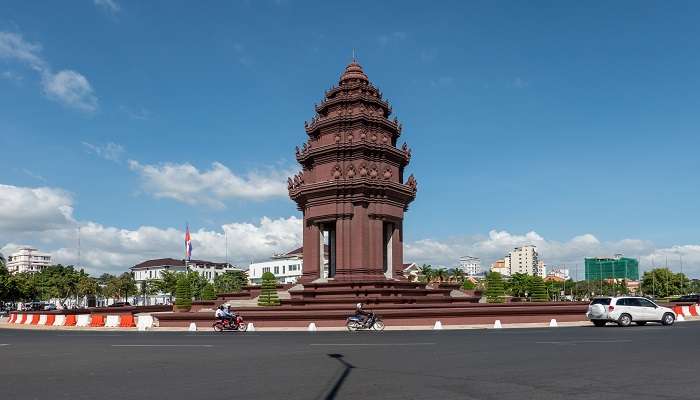
The government built this monument in 1958 to celebrate Cambodia’s independence from France. This iconic monument, which looks like a flower, is in the city’s heart. At night, the memorial is beautifully illuminated, making it a picturesque spot for photography.
Address: HW4H+H74, Phnom Penh, Cambodia
Distance: 1.43km from Tuol Sleng Genocide Museum
Suggested Read: Temples In Cambodia
Timings, Best Time To Visit And Entry Fee
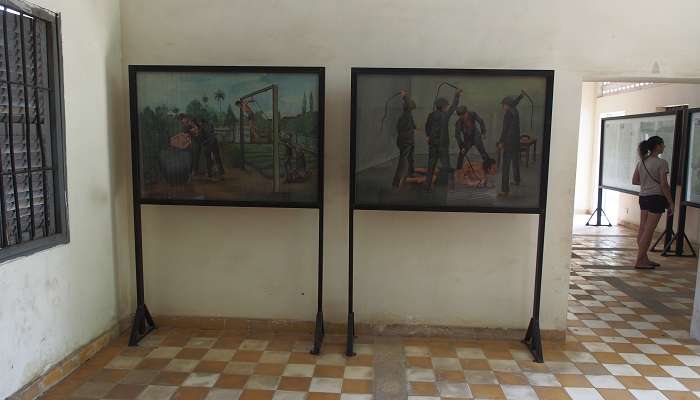
Tuol Sleng Genocide Museum’s opening hours are usually 8:00 AM to 5:00 PM daily, but it stays closed between 11:30 AM and 2:00 PM for a Lunch break. Tuol Sleng Genocide Museum Entrance Fee is USD 5 for adults. You can buy the tickets at the entrance in cash, as card payments may only sometimes be accepted.
The best time to visit the Tuol Sleng Genocide Museum is in the morning, and it is much less crowded on weekdays, so if you want to avoid crowds, this is the best time. They sometimes organise events during significant Cambodian historical dates for a deeper understanding of the context of the exhibits. Remember to follow the Tuol Sleng Genocide Museum dress code, as this place is a Cambodian commemorative and religious site; you have to wear something that covers your legs and arms.
Further Read: Things To Do In Battambang
Marvel at the strength and bravery of the people who lived through it, their tales carved into the walls of Tuol Sleng. Feel the eerie quiet of the museum, and remember how crucial it is not to forget the past and its terrors. Pause and think about what we have learned and the need to speak up for peace and people’s rights. So, book a trip to Cambodia and add this Tuol Sleng Genocide museum to your must-see itinerary.
For our editorial codes of conduct and copyright disclaimer, please click here.
Cover Image Credit: Michael Gruijters for Wikimedia Commons
Frequently Asked Questions About Tuol Sleng Genocide Museum
What are the opening hours of the Tuol Sleng Genocide Museum?
The Tuol Sleng Genocide Museum is open every day of the week from 8:00 AM to 5:00 PM. So, plan your visit during this time and explore the place.
Is there an entrance fee for visiting the Tuol Sleng Genocide Museum?
The entrance fee for visiting the Tuol Sleng Genocide Museum is around USD 5. However, if you choose to take an audio guide, they will charge you an additional fee of approximately USD 3.
How long does it typically take to tour the Tuol Sleng Genocide Museum?
It typically takes about 1.5 to 2 hours to tour the museum. But you can spend more time if you want to and listen to the entire audio guide or read all the exhibit information in detail.
Are there any exhibits or resources in languages other than Khmer?
Yes, the museum often organises exhibitions and gives resources in multiple languages, including English and French. You will also find Audio guide options in several languages, including English, French, German, Japanese, Thai, Korean, Chinese, and more.
Can I take photographs inside the Tuol Sleng Genocide Museum?
Yes, photography is allowed inside the museum, but remember that the museum is a place of remembrance and reflection, so be respectful and considerate while taking photographs.
People Also Read:
Queensland Museums Kumarakom Craft Museum Osaka Museums

Unveil the hidden treasures of the globe and turn every travel dream into reality. As a Content Writer, I am passionate enough to craft stories from ancient wonders to modern marvels. My words paint the picture-perfect itinerary for unforgettable experiences. Let my words be your trusted guide to immerse in the diverse culture and discover the beauty of the unknown.











